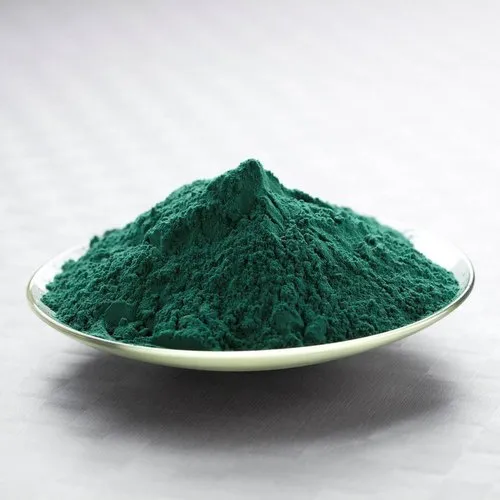Basic Chrome Sulphate Manufacturing Cost Analysis Report 2025: Price Drivers and Factors

Introduction
Basic Chrome Sulphate (BCS), often represented by the chemical formula Cr(OH)SO4, is an inorganic chemical compound that typically appears as a green, odorless powder or flakes. It is a derivative of chromium, specifically containing chromium in its trivalent (Cr3+) oxidation state, which is significantly less toxic and more environmentally benign than the hexavalent chromium (Cr6+) form. BCS is primarily produced through the controlled reduction of sodium dichromate with sulfur dioxide in an acidic medium. Its most prominent industrial application is in the leather tanning industry, where it plays a crucial role in converting raw animal hides into durable, flexible, and water-resistant leather. Beyond tanning, BCS also finds use as a mordant in textile dyeing, enhancing color fastness, in the production of certain pigments, and occasionally in metal surface treatments due to its unique chemical properties.
The Basic Chrome Sulphate (BCS) industry is predominantly driven by the robust and continuous demand from the global leather tanning industry. BCS remains the most efficient and widely used tanning agent, primarily due to its ability to impart superior qualities like durability, flexibility, and resistance to degradation in leather products. The increasing global consumption of leather goods, including footwear, apparel, automotive upholstery, and luxury items, particularly from emerging economies with rising disposable incomes, directly fuels the demand for BCS. Additionally, its use as a mordant in the textile dyeing industry for achieving stable and vibrant colors, especially for khaki fabrics, also contributes to market growth. Looking ahead, several key trends are shaping the industry. There's a growing global emphasis on sustainable and eco-friendly leather production practices, which includes efforts to optimize BCS usage, reduce its environmental footprint, and ensure proper wastewater treatment to minimize chromium discharge. While chromium-free tanning alternatives are being explored due to environmental concerns, BCS maintains its market dominance due to its cost-effectiveness and proven performance, leading to ongoing research into cleaner production processes for BCS itself. Advancements in leather processing technologies that aim for more efficient and lower-impact tanning methods also influence demand. The increasing focus on circular economy initiatives within the leather industry, such as recycling chromium from spent tanning liquors, represents a significant trend.
Project Scope and Overview
IMARC’s new report titled “Basic Chrome Sulphate Manufacturing Plant Project Report 2025: Industry Trends, Plant Setup, Machinery, Raw Materials, Investment Opportunities, Cost and Revenue,” provides a comprehensive roadmap for setting up a basic chrome sulphate manufacturing plant. The study encompasses all the essential information needed to enter the basic chrome sulphate industry, including a detailed basic chrome sulphate manufacturing plant feasibility report to assess the viability of the project. This report offers an in-depth evaluation of the basic chrome sulphate manufacturing plant cost, enabling readers to understand recurring operational expenditures and return on investment. It is a valuable resource for entrepreneurs, investors, researchers, consultants, business strategists, and anyone with an interest or stake in the basic chrome sulphate sector. Moreover, it explains how to start a basic chrome sulphate manufacturing plant, outlining the plant setup cost and guiding users through the capital planning and resource allocation stages essential for launching production effectively.
Manufacturing Process and Technical Workflow
This report offers detailed information related to the process flow and the unit operations involved in a basic chrome sulphate manufacturing plant project. Moreover, information related to raw material requirements and mass balance has further been provided in the report with a list of necessary technical tests as well as quality assurance criteria.
Aspects Covered
- Product Overview
- Unit Operations Involved
- Mass Balance and Raw Material Requirements
- Quality Assurance Criteria
- Technical Tests
Request for a Sample Report: https://www.imarcgroup.com/basic-chrome-sulphate-manufacturing-plant-project-report/requestsample
Infrastructure and Setup Requirements
This section presents a comprehensive analysis of key considerations involved in establishing a basic chrome sulphate manufacturing plant. It covers critical aspects such as land location, selection criteria, strategic significance of the site, environmental impact, and associated land acquisition costs. In addition, the report outlines the proposed plant layout along with the primary factors influencing its design. Furthermore, it provides detailed insights into various operational requirements and expenditures, including those related to packaging, utilities, machinery, transportation, raw materials, and human resources.
- Land, Location and Site Development
- Plant Layout
- Machinery Requirements and Costs
- Raw Material Requirements and Costs
- Packaging Requirements and Costs
- Transportation Requirements and Costs
- Utility Requirements and Costs
- Human Resource Requirements and Costs
Browse the Full Report with the Table of Contents: https://www.imarcgroup.com/basic-chrome-sulphate-manufacturing-plant-project-report
Financial Projections and Economic Viability
This section provides a comprehensive economic analysis for establishing a basic chrome sulphate manufacturing plant. It encompasses a detailed evaluation of capital expenditure (CapEx), operating expenditure (OpEx), taxation, and depreciation. Additionally, the report includes profitability analysis, payback period estimation, net present value (NPV), projected income statements, liquidity assessment, and in-depth examinations of financial uncertainty and sensitivity parameters.
- Capital Investments
- Operating Costs
- Expenditure Projections
- Revenue Projections
- Taxation and Depreciation
- Profit Projections
- Financial Analysis
Key Considerations for Plant Design and Operations:
Production Capacity:
The selection of machinery and the design of the plant layout should be aligned with the intended scale of production, which may vary from small-scale operations to large industrial facilities. This alignment ensures optimal utilization of space, resources, and production capabilities.
Automation Levels:
The degree of automation should be adjusted based on factors such as labor availability, budget constraints, and the level of technical expertise. Options may range from semi-automated systems to fully automated solutions, allowing for flexibility in capital investment and operational efficiency.
Location Adaptation:
Plant location should be strategically selected to align with local market demand, ensure proximity to raw material sources, leverage available labor, and comply with regional regulatory requirements. These factors collectively contribute to improved operational efficiency and cost optimization.
Product Flexibility:
The plant should be equipped with processes and machinery capable of accommodating a variety of product specifications. This flexibility enables manufacturers to respond to diverse and evolving market demands effectively.
Sustainability Features:
Incorporating sustainable practices is essential. This includes the integration of renewable energy sources, implementation of efficient waste management systems, and use of energy-efficient machinery to meet environmental standards and long-term sustainability objectives.
Raw Material Sourcing:
The supply chain strategy should be customized to ensure reliable and cost-effective sourcing of raw materials. This approach should consider client-specific requirements and regional supply dynamics to maintain consistent production and manage input costs.
About Us: IMARC Group is a leading global market research and management consulting firm. We specialize in helping organizations identify opportunities, mitigate risks, and create impactful business strategies.
Our expertise includes:
- Market Entry and Expansion Strategy
- Feasibility Studies and Business Planning
- Company Incorporation and Factory Setup Support
- Regulatory and Licensing Navigation
- Competitive Analysis and Benchmarking
- Procurement and Supply Chain Research
- Branding, Marketing, and Sales Strategy
Contact Us:
IMARC Group
134 N 4th St. Brooklyn, NY 11249, USA
Email: sales@imarcgroup.com
Tel No:(D) +91 120 433 0800
United States: +1-631-791-1145



